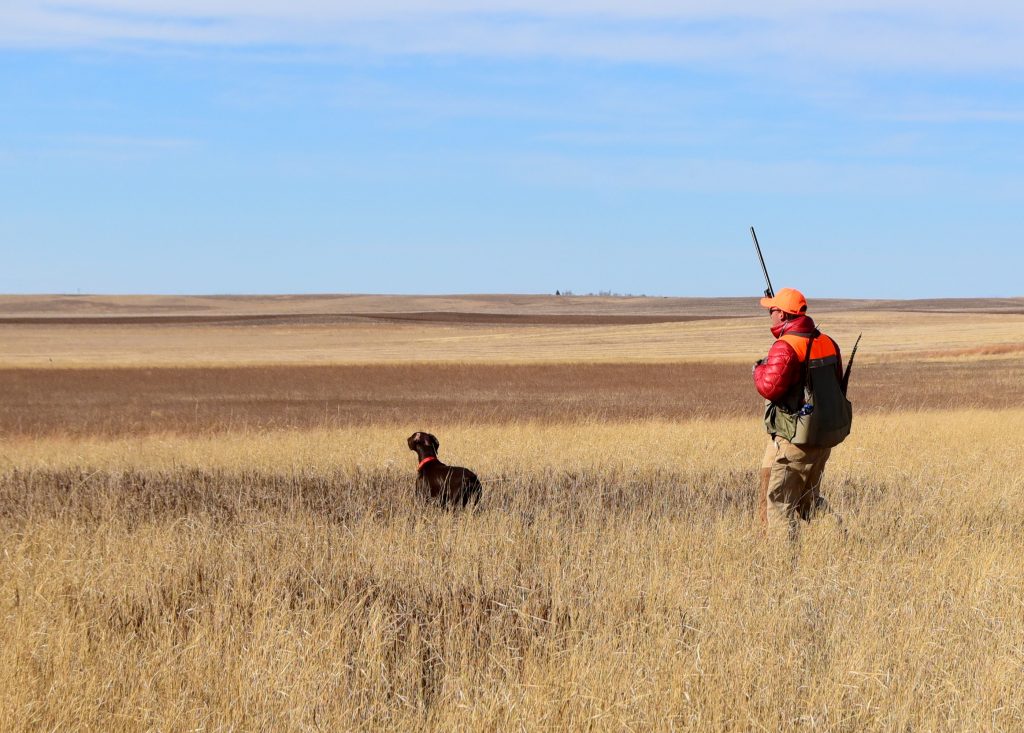#Farming4Habitat: Growing Access through VPA-HIP
Not having access to quality, wildlife-rich land to hunt is often cited as the leading cause for the decline in hunter participation over the past few decades.
It is also one of the primary reasons people do not try hunting. The Voluntary Public Access – Habitat Incentive Program offers states and tribes the ability to tap into private-land resources to address the access problem and attempt to reverse the trend.
In the West, where U.S. Bureau of Land Management and USDA Forest Service lands are abundant and make up the majority of the lands in many states, accessing public land for hunting is less of a concern and a long-standing tradition in the region. Generally, populations are less dense than in the Midwest and East, and hunters are more widely distributed across the landscape, reducing competition, fear of encounters with other hunters and concentrated pressure on game species. Surveys show that these considerations factor into hunter satisfaction, which, in turn, is a factor in hunter retention.
In the Midwest and East, where private lands dominate the landscape and public lands often make up less than a quarter of the available hunting lands, states and tribes struggle to provide opportunities for a similar experience. Hunters are concentrated into fewer available public acres, increasing competition and encounters with other hunters, upping pressure on game species and significantly reducing hunter satisfaction and, potentially, their safety.

VPA-HIP was first authorized in the 2008 Farm Bill. It created a competitive granting process where states and tribes can apply for funding to lease and/or encourage private landowners, including family farmers and industrial farming/ timber operations, to open their lands and/ or improve acres for the benefit of wildlife. In the 2020 VPA-HIP Grant Summary report, the latest of which we have access, 26 states and one tribe were awarded grants totaling about $50 million. Since the full implementation of the program in 2010, over a million acres of private lands have been opened to hunting, increasing available acreage, reducing hunting pressure, competition and encounters.
VPA-HIP is a valuable tool in the hunter recruitment, retention and reactivation toolbox. Most states try to maximize access by designating an array of state-owned lands for hunting. In South Carolina, there are Wildlife Management Areas, Heritage Preserves, and even some state parks and special designated areas that allow hunting. Then there are federal lands such as National Forests, National Wildlife Refuges, U.S. Army Corps of Engineers and even Department of Defense Installation properties. Finally, they may apply for a VPA-HIP grant to further increase access opportunities, such as leasing dove fields from private landowners.
VPA’s benefits to wildlife go well beyond the Habitat Incentives Program part of the equation. More places to hunt can increase hunting participation, which increases license sales that fund state conservation efforts, and more license sales increase states’ portion of annual Pittman-Robertson fund disbursements, which also are used to improve habitat and address other wildlife and conservation needs.
The program’s benefits to the landowners can be just as impactful. In addition to the obvious financial incentive, otherwise marginal or nonarable land or land not targeted for agriculture can be converted into excellent habitat and hunting property through participation in the state-led agreements. The actions used to increase habitat quality can have lasting positive effects on the soil and water quality of the property. If the landowner later decides to return it to production, the land could be better for it.
The community and local economies benefit as well, according to a study conducted by Southwick Associates on behalf of the Association of Fish and Wildlife Agencies, Benefits of the VPA-HIP: 2021. It states: “An estimated $47.1 million of additional trip and equipment-related spending was generated by the increased recreational days that occurred as a result of the investments made for lands enrolled in the VPA-HIP program in 2021. A total of $5.79 million in VPA-HIP funds were invested on these enrolled acres in 2021, meaning $8.13 were generated for every $1 invested.”
VPA-HIP continues to play a large role in the fight to turn around the decline of hunters in states across the U.S. It has tremendous value to wildlife, to hunters and local, rural economies. Learn more about VPA-HIP by visiting www.Farming4Habitat.org or reaching out to your state wildlife agency’s public access lead.
Why It Matters
The NWTF has strong interest in the Farm Bill and its impact on conservation and hunting through the VPA-HIP because it has:
- Opened over a million acres of private lands to hunting, increasing available acreage, reducing hunting pressure and competition since 2010.
- Generated an estimated $47.1 million of additional trip and equipment-related spending through the increased recreational days that occurred as a result of the investments made for lands enrolled in the program in 2021. More than $8 were generated for every $1 invested.
